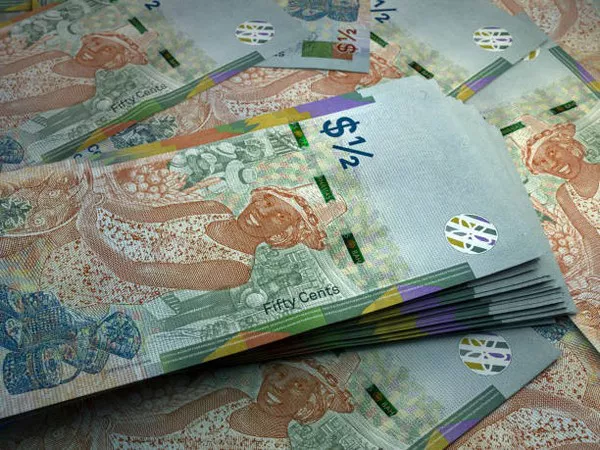The currency notes of a nation often serve as a canvas that reflects its rich history, culture, and national identity. The Bahamas, an archipelago of stunning islands in the Caribbean, is no exception. The Bahamian currency notes not only facilitate transactions but also showcase the country’s unique heritage through carefully chosen symbols and images. In this article, we will delve into the elements featured on the Bahamas currency notes, unraveling the stories and significance behind each design.
The Bahamian Dollar
The official currency of The Bahamas is the Bahamian Dollar (BSD), which is pegged to the United States Dollar at a 1:1 ratio. The Central Bank of The Bahamas is responsible for issuing and regulating the currency, ensuring its stability and integrity. The currency notes come in denominations of $1, $5, $10, $20, $50, and $100, each adorned with distinct motifs that encapsulate the essence of The Bahamas.
The One Dollar Note: Flamingo and Marlin Dance
The One Dollar note is a vibrant representation of Bahamian wildlife and marine life. On the front side, a majestic flamingo takes center stage, symbolizing the country’s diverse bird population. Flamingos are native to the Bahamas and are known for their grace and vibrant pink plumage. Surrounding the flamingo, the blue marlin, a prized catch in Bahamian waters, is depicted in a dynamic dance, reflecting the vitality of the country’s marine ecosystem.
On the reverse side, the image of Queen Elizabeth II, as the head of state, is featured along with elements showcasing the rich maritime heritage of The Bahamas, such as a sloop sailing in Bahamian waters.
The Five Dollar Note: Blue Hole and Lighthouse
The Five Dollar note pays homage to the natural wonders of The Bahamas. The front side showcases the iconic Dean’s Blue Hole, one of the world’s deepest underwater sinkholes. This natural marvel is a popular spot for divers and represents the country’s commitment to preserving its unique ecological sites. The image is complemented by the Hope Town Lighthouse, a historic landmark on Elbow Cay in the Abaco Islands, emphasizing the importance of navigation and safety in the maritime history of The Bahamas.
Flipping the note reveals a depiction of the Straw Market, a cultural hub where local artisans showcase their handmade crafts, further highlighting the importance of traditional craftsmanship in Bahamian society.
The Ten Dollar Note: Pineapple and Conch Shell
The Ten Dollar note celebrates the agricultural and culinary richness of The Bahamas. The front side features the pineapple, a symbol of hospitality and warmth, which holds significant cultural value in the country. This tropical fruit is not only a staple in Bahamian cuisine but also represents the welcoming spirit of the Bahamian people.
On the reverse side, a conch shell takes center stage, paying homage to the conch, a staple in Bahamian seafood cuisine. The conch is intricately tied to the culinary identity of The Bahamas and serves as a reminder of the country’s maritime roots.
The Twenty Dollar Note: Sir Milo Butler and Historical Architecture
The Twenty Dollar note is a tribute to Sir Milo Butler, the first Bahamian Governor-General, and features an image of him on the front side. Sir Milo Butler played a pivotal role in the transition to Bahamian independence, and his legacy is celebrated on this currency note.
The reverse side showcases the Queen’s Staircase in Nassau, a historic site built by slaves in the late 18th century. This architectural marvel serves as a poignant reminder of the nation’s history, resilience, and the enduring spirit of its people.
The Fifty Dollar Note: Independence Heroes and National Symbols
The Fifty Dollar note is a commemoration of Bahamian independence and features the portraits of Sir Lynden Pindling, the first Prime Minister of The Bahamas, and Sir Milo Butler. Their images symbolize the leadership and vision that guided The Bahamas to independence in 1973.
The reverse side displays the national coat of arms, depicting a shield with a conch shell, flamingo, and pineapple, encapsulating the essence of the Bahamian identity. The coat of arms is flanked by two marlins, further emphasizing the country’s maritime heritage.
The One Hundred Dollar Note: Sir Roland Symonette and Tourism
The One Hundred Dollar note honors Sir Roland Symonette, the first Premier of The Bahamas and an influential figure in the early years of self-governance. His portrait on the front side acknowledges his contributions to the nation’s development.
On the reverse side, the note features an image of an underwater Bimini Road, a phenomenon in Bahamian waters that has sparked intrigue and speculation. This design not only highlights the country’s natural wonders but also emphasizes the importance of tourism, a key economic driver for The Bahamas.
See Also: What Countries Use The Bahamian Dollar?
Conclusion
In conclusion, the Bahamian currency notes serve as more than just a medium of exchange—they are a visual representation of the nation’s history, culture, and natural beauty. From vibrant wildlife to historic landmarks, each note tells a unique story, inviting locals and visitors alike to appreciate the diverse tapestry of The Bahamas. As these notes exchange hands daily, they carry with them the legacy and spirit of a nation proud of its heritage and optimistic about its future.


